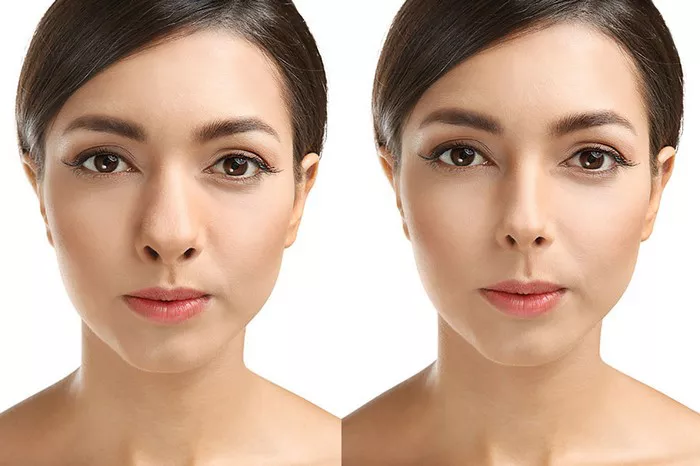Nose surgery, also known as rhinoplasty, is a popular cosmetic procedure that can enhance the appearance and functionality of the nose. One of the common questions individuals considering rhinoplasty often have is whether the results of nose surgery are permanent. In this article, we will explore the factors that influence the permanence of nose surgery results and provide insights into what patients can expect in terms of long-term outcomes.
Understanding Rhinoplasty
Rhinoplasty is a surgical procedure performed by plastic surgeons or facial plastic surgeons to modify the shape, size, or function of the nose. It can be performed for both cosmetic and functional reasons. Cosmetic rhinoplasty focuses on improving the aesthetics of the nose, while functional rhinoplasty aims to correct breathing difficulties or other medical issues related to nasal structure.
Key Considerations for Rhinoplasty
Cosmetic Enhancement: Cosmetic rhinoplasty addresses concerns such as a hump on the nasal bridge, a bulbous tip, crookedness, or other aesthetic issues.
Functional Improvement: Functional rhinoplasty focuses on improving nasal function, which can include correcting a deviated septum, reducing nasal congestion, or addressing other breathing difficulties.
Customization: Each rhinoplasty procedure is highly customized to meet the unique goals and needs of the patient. The surgeon works closely with the patient to achieve the desired outcome.
Anesthesia: Rhinoplasty can be performed under local anesthesia with sedation or general anesthesia, depending on the complexity of the procedure and the patient’s preferences.
Incisions: Incisions for rhinoplasty are typically made inside the nostrils (closed rhinoplasty) or across the columella (the strip of tissue between the nostrils) for open rhinoplasty.
Are the Results of Rhinoplasty Permanent?
The permanence of rhinoplasty results is a common concern among patients. While rhinoplasty can produce long-lasting changes to the nose’s appearance and function, several factors influence the longevity of these results:
Surgical Skill and Technique: The skill and expertise of the surgeon are crucial factors in the longevity of rhinoplasty results. An experienced surgeon is more likely to achieve precise and lasting outcomes.
Tissue Healing and Scarring: The healing process plays a significant role in the final appearance of the nose. Swelling, bruising, and scarring are common after rhinoplasty, and it takes time for these effects to subside.
Patient’s Anatomy: The patient’s natural nasal anatomy and tissue quality can affect the long-term results. Some individuals may have thicker or thinner skin, which can impact the final appearance.
Aging: Over time, natural aging processes can influence the appearance of the nose. The skin may lose elasticity, and subtle changes may occur. However, rhinoplasty can provide long-lasting improvements that still appear youthful as the patient ages.
Postoperative Care: Following the surgeon’s postoperative care instructions is vital for achieving the best and most long-lasting results. Patients should avoid activities that could put stress on the nose during the initial healing period.
Revision Rhinoplasty: In some cases, patients may seek revision rhinoplasty to further refine or maintain the results achieved in the initial surgery. Revision surgery is typically more complex.
Lifestyle Factors: Lifestyle choices, such as smoking or excessive sun exposure, can impact the longevity of rhinoplasty results. Smoking, in particular, can hinder the healing process and affect the appearance of the nose.
Injury or Trauma: Accidental injury or trauma to the nose can compromise the results of rhinoplasty. It is essential to protect the nose from any potential harm.
What to Expect in the Long Term
Patients considering rhinoplasty should have realistic expectations regarding the permanence of the results. While rhinoplasty can provide enduring improvements to the nose’s appearance and function, it is essential to understand that the nose will continue to age naturally. Here are some key points to keep in mind:
Initial Healing: The initial healing period can take several weeks to months. During this time, swelling and bruising will gradually subside, and the nose will begin to settle into its final shape.
Long-Term Results: Most patients will enjoy the long-term benefits of rhinoplasty, with results that can last for many years, if not a lifetime.
Aging: As mentioned earlier, natural aging processes can affect the nose’s appearance. However, the changes that occur due to aging are typically subtle and gradual.
Maintenance: Proper maintenance of overall health and well-being can contribute to the longevity of rhinoplasty results. This includes a healthy lifestyle, sun protection, and avoidance of behaviors that could impact healing.
Conclusion
Rhinoplasty is a surgical procedure that can produce long-lasting improvements in the appearance and function of the nose. The permanence of rhinoplasty results depends on various factors, including the surgeon’s skill, the patient’s anatomy, and postoperative care. While the nose will continue to age naturally, patients can expect to enjoy the benefits of rhinoplasty for many years.
It is essential for individuals considering rhinoplasty to have realistic expectations and to work closely with an experienced surgeon to achieve their desired outcome. By understanding the factors that influence the longevity of rhinoplasty results and taking appropriate steps to care for their nose, patients can enjoy the enduring benefits of this transformative procedure.


